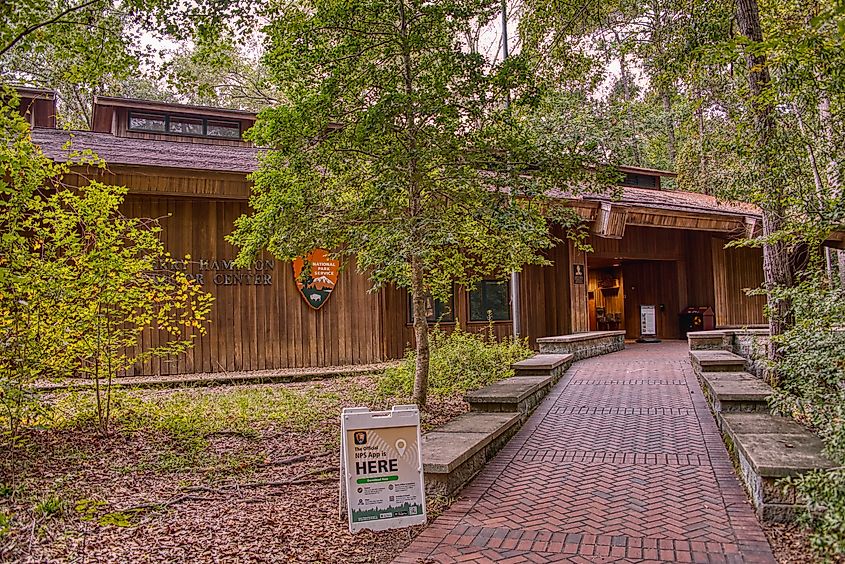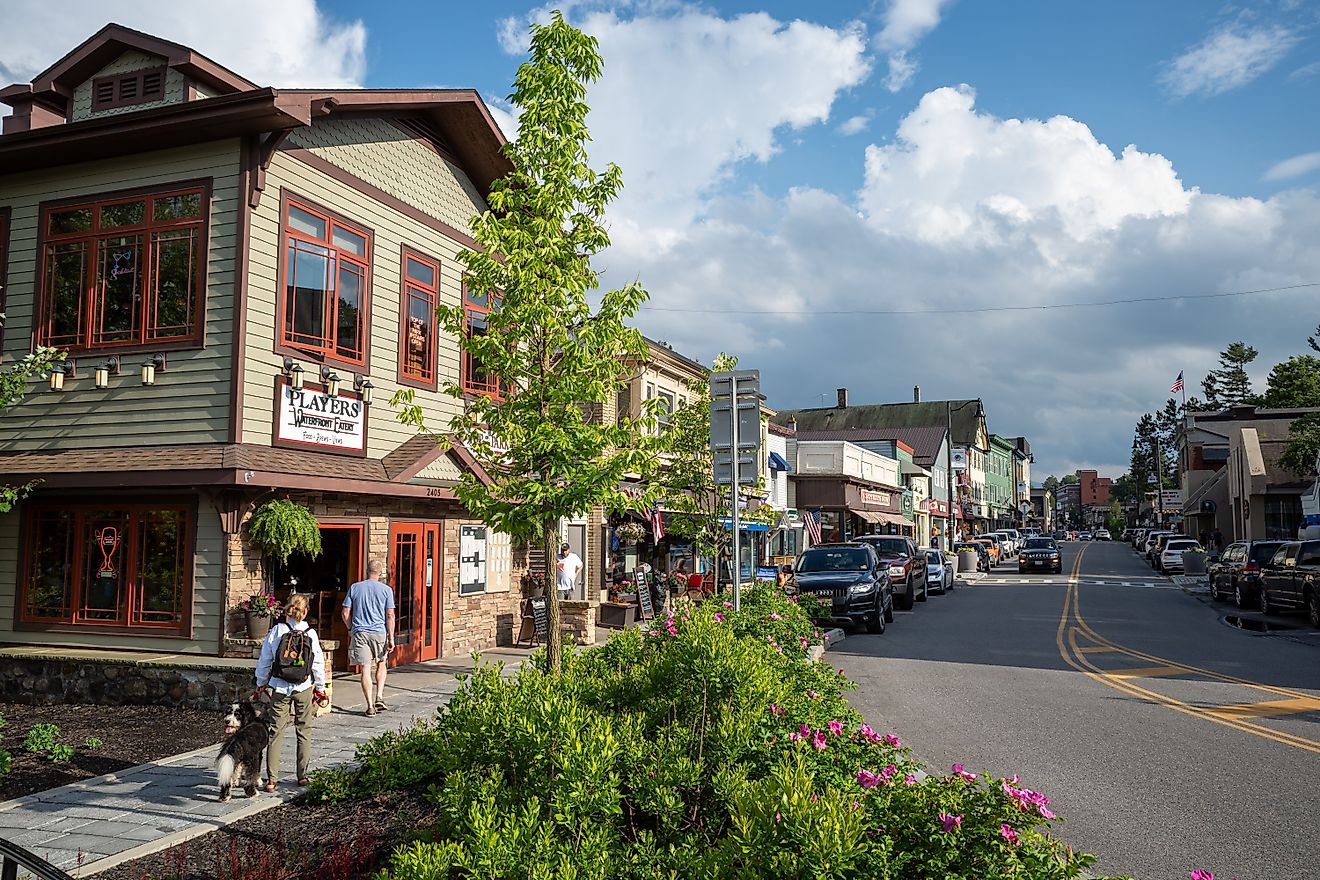
Congaree National Park’s Firefly Synchrony Lights Up America’s Tallest Forest
About a half-hour's drive away from South Carolina's capital city of Columbia sits one of the most biologically diverse parks in the country. Congaree National Park is a haven for all sorts of outdoor interests, from paddling and hiking to wildlife research and simple sightseeing.
Its towering old-growth forests host a plethora of life, including some of the tallest trees on the continent and massive populations of fireflies, the latter of which attracts flocks of visitors each Spring to witness a truly mesmerizing natural light show. Learn a bit more about this wonderful preserve, and what else you can see and do in and around its borders.
The History and Land of Congaree National Park

Congaree National Park protects the largest swathe of old-growth bottomland hardwood forestland in the southeast corner of the United States. The park lies within the Congaree River floodplain, an ecosystem shaped by seasonal flooding that nourishes a wide range of plant and animal life. Its nutrient-rich alluvial soils support enormous species of trees such as bald cypress, loblolly pine, and water tupelo, which are again, some among the tallest in the entire U.S.
The area has a long history of human interaction as well. For centuries, it was home to Indigenous peoples, including members of the Congaree tribe, from whom the park takes its name. Later on, during the 18th and 19th centuries, the land was logged and altered by the ever-expanding European, then American, colonies, yet a portion of the forest thankfully remained relatively untouched.
Budding conservation efforts in the 20th century, led by local activists and naturalists, culminated in the designation of Congaree Swamp National Monument in 1976. It then gained full national park status in 2003 and continues to invite over a quarter of a million visitors per year.
See one of the Largest Congregations of Fireflies on Earth

Each spring, Congaree turns into the stage for a natural spectacle: the synchronous firefly display that the park has become famous for. For a couple of weeks, usually in late May to early June, thousands of Photinus carolinus fireflies flash in unison during their mating rituals. Unlike the more common asynchronous blinking of other firefly species, these ones produce bursts of coordinated light that pulse across the forest floor in near-perfect rhythm, a truly amazing sight to behold for those lucky enough to be there.
These fireflies thrive in Congaree’s unique environment, where damp soils, dense vegetation, and a relatively undisturbed ecosystem provide ideal breeding conditions. Researchers believe the synchronized flashing helps males stand out to females, with the brightest and most effective catching their attention, while also possibly reducing the chances of predation by other hungry creatures. Though fireflies are common in the Southeast, this level of coordination is rare and limited to only a few regions elsewhere.
Note that this phenomenon alone draws many thousands of visitors each year, prompting the National Park Service to implement a lottery system to manage crowds and protect the sensitive habitat. In 2025, the breeding season window is between May 14-21, in which everyone, besides those who have successfully won an event pass, must leave the park before 4:30 p.m.
What else is there to do in Congaree?

Being able to see the firefly show at its peak has become quite difficult over the years, but that's not an excuse to skip this national park. Regardless of the time of year or the time of day, it is chock-full of fun outdoor activities and awe-inspiring views at every corner. Let's take a look at what other must-do experiences you can embark on in Congaree today.
Hiking

The park features over 25 miles of trails that wind through its various environments. The most accessible route is the Boardwalk Loop Trail, a 2.4-mile elevated walkway that guides you through old-growth forest and swamp while keeping your feet dry. Interpretive signs along the boardwalk provide information about a variety of subjects, from the park’s biodiversity and hydrology to its human history.
For those seeking a more immersive experience, trails like the nearly 11-mile River Trail or the long Oakridge Trail lead deeper into the backcountry, where hikers are more likely to spot wildlife such as barred owls, deer, and even feral hogs. These routes vary in difficulty and may be muddy or submerged during high water, so conditions should be checked in advance, and appropriate gear should always be brought.
However, Congaree’s terrain is remarkably flat, making most trails manageable for a wide range of fitness levels. Whether for a short walk or a full-day trek, hiking here offers an up-close outing in a rare and vibrant forest ecosystem, a far cry from big city life.
Paddling

Paddling through Congaree National Park makes for a more unique way to explore the park’s wilderness, navigating slow-moving creeks and channels beneath a canopy of ancient trees. The area's populations of bald cypress and tupelo trees rise from the water, their roots forming eye-catching spires and knees that add to the surreal character of the landscape.
Cedar Creek is the primary waterway for canoeing and kayaking, with the trail stretching about 15 miles through the heart of the park. The water is typically calm and deeply black-tinted from tannins released from local plant life. This means that it is suitable for paddlers of various skill levels, though debris can often be masked by the murky water. Changing water levels can create occasional obstacles, too, so always check in with park staff about conditions before heading out.
Paddlers commonly spot wading birds, snakes, turtles, river otters, and even the occasional alligator along the banks! Guided paddling tours are also available seasonally, and private paddling trips are permitted year-round with a free backcountry permit.
Camping

The park itself contains two designated campgrounds: Longleaf Campground and Bluff Campground. Longleaf, located near the Harry Hampton Visitor Center, has a parking area and accommodates tents for individuals and groups, while nearby Bluff is also tent-only but requires a short hike to access, giving you a bit of a backcountry experience. Both sites provide basic amenities, including picnic tables and fire rings, but no electricity or running water. Campers must bring their own supplies, and vault toilets are only available at Longleaf.
For those seeking a more remote outing, Congaree does allow backcountry camping, requiring only a free permit. You may paddle or hike deeper into the forest and set up camp according to the rules, following Leave No Trace principles and remaining at least 100 feet away from most bodies of water.
The environment is humid and often buggy year-round, so preparation is key. On the bright side, overnight stays in Congaree National Park allow for opportunities to hear barred owls calling through the trees, watch fog rise over the water, witness the park’s nocturnal wildlife emerge, and hopefully see a clear night sky full of stars.
Where to Stay Outside the Park?
With Columbia being only about 30 minutes away, it is the typical choice for travelers looking for a comfy spot to rest their head for the night. It has numerous options for hotels, restaurants, and shopping, along with several of its own worthwhile attractions, like the Columbia Museum of Art, or for a more urban park experience, the Columbia Canal and Riverfront Park. Another excellent slice of local green space is the Sesquicentennial State Park, which lies just northeast of the city's limits.
For a slightly quieter stay, Orangeburg sits about the same distance away, south of the park. To the east, Sumter is another option, again, with a decent selection of accommodations and eateries that you'd find in any typical mid-sized American city.











